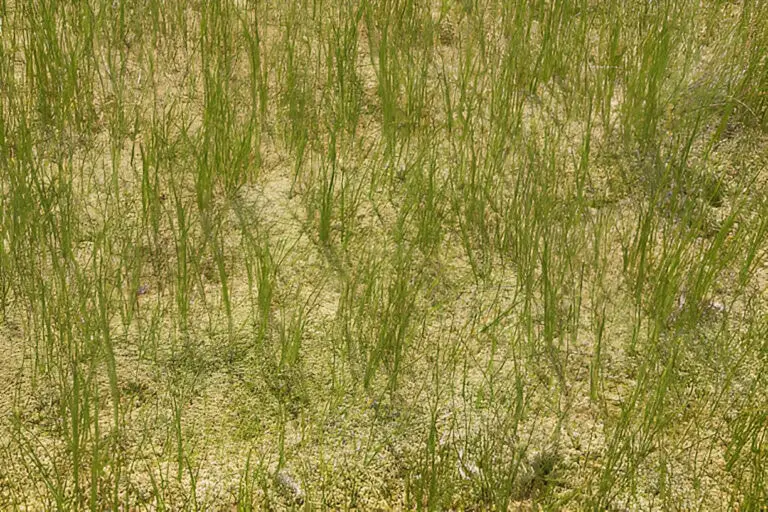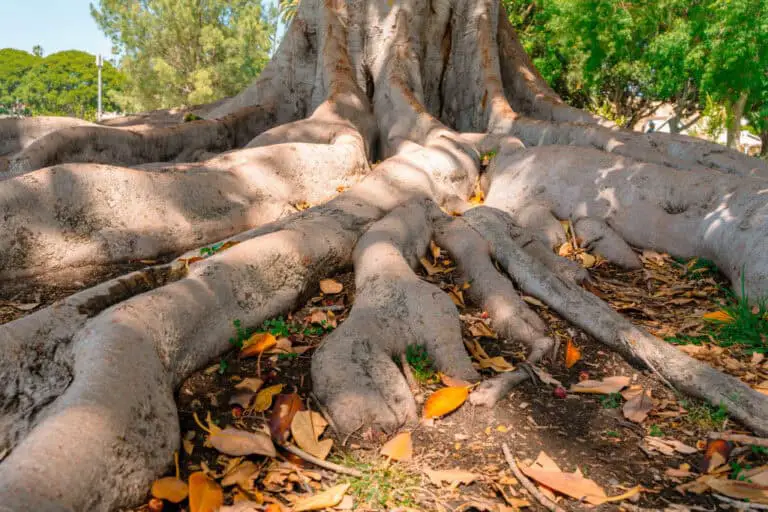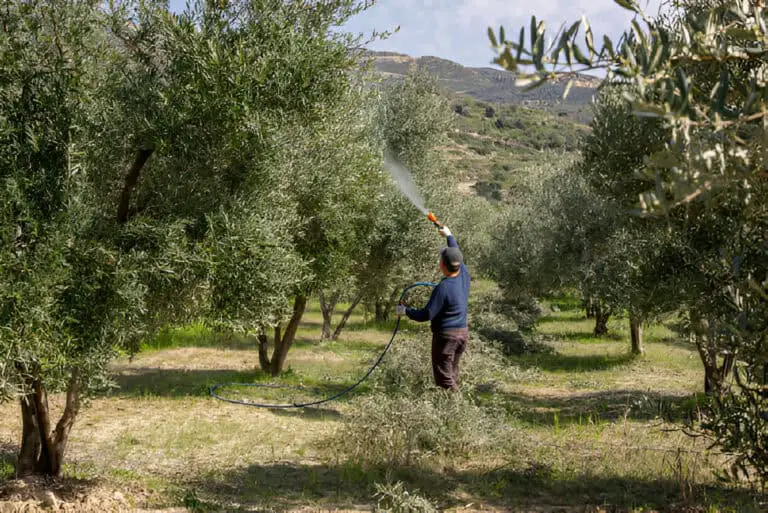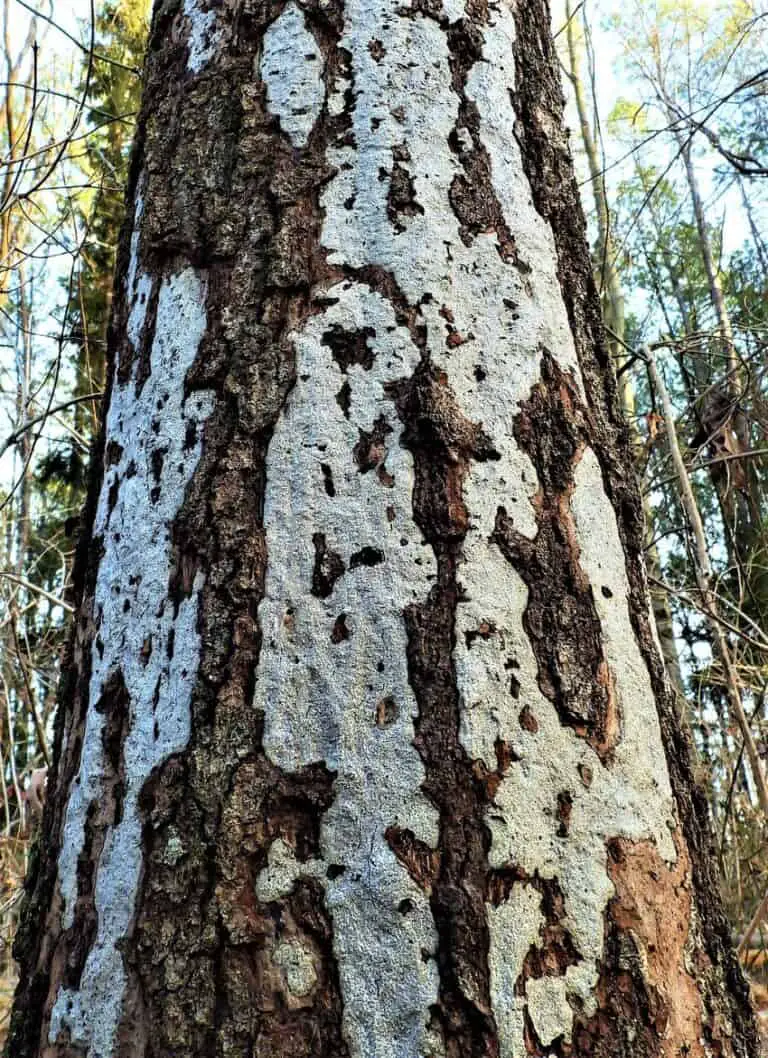Jade Plant Falling Over – 8 Common Reasons Crassula Ovata Falls Over
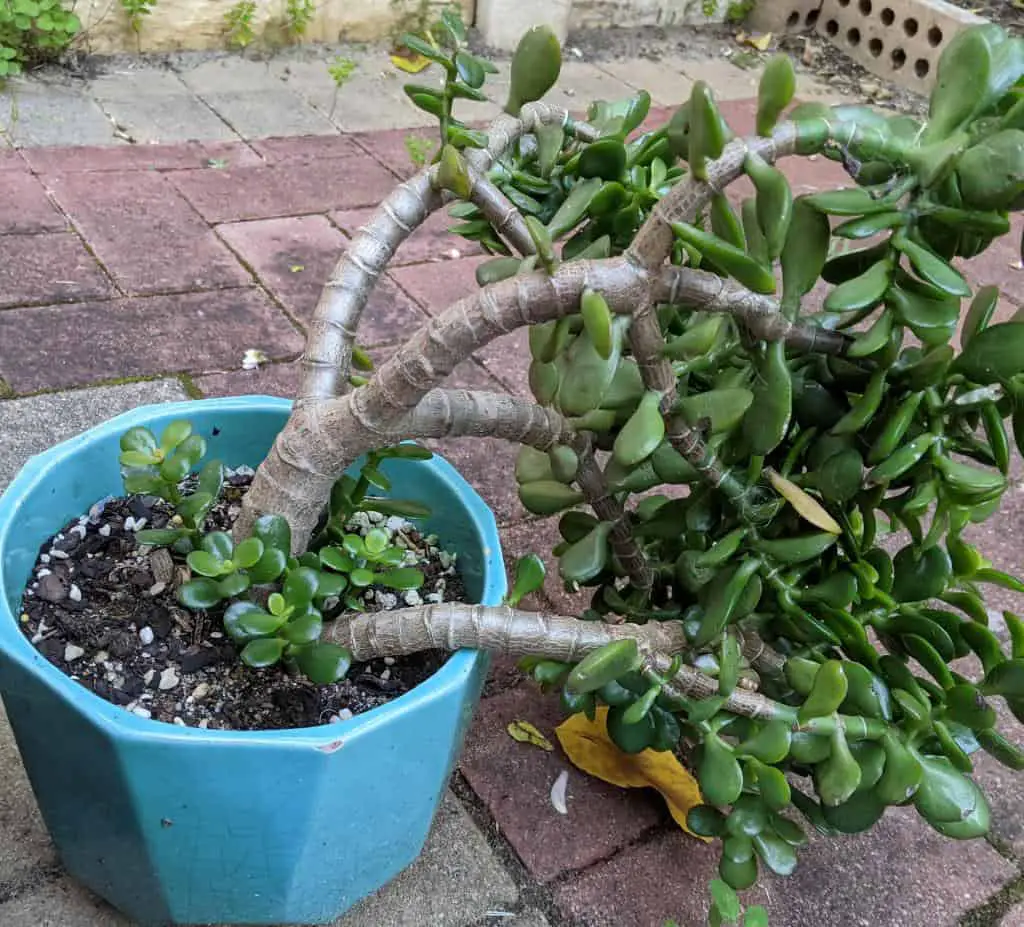
Is your jade plant falling over? Then you have landed on the right page! In this article, I am going to give you the eight most common reasons a jade plant falls over.
Jade plants (Crassula Ovata), are common houseplants across the globe due to their low maintenance and ability to adapt to different environments. They are part of the succulent family and are vibrant green in color with thick, plump leaves.
Native to South Africa, jade plants thrive in warm, dry conditions. They have the capability to store water in their stems for a long period of time, meaning they don’t need to be watered often.
But what happens when a jade plant is too heavy and falls over? If you’re sitting at home thinking ‘my jade plant is falling over’ then it is likely to be one of eight reasons.
So why is my jade plant falling over? Typically a jade plant will fall over due to overwatering, underwatering, if you are using the wrong soil type, wrong lighting, low temperature, overfertilizing, constant repotting, or quite simply it has grown to be top-heavy!
Understanding the Appeal of Jade Plants
Jade plants, with their glossy green leaves and robust appearance, have captured the hearts of succulent enthusiasts everywhere. Known for their ease of care and resilience, these plants make popular choices for both beginner and seasoned gardeners.
Their appeal lies not only in their attractive, fleshy foliage but also in their symbolic significance, often associated with prosperity and good luck.
Importance of Understanding the Reasons Behind a Jade Plant Falling Over
These hardy plants, with their glossy, oval leaves and tree-like structure, are often seen as symbols of good luck and prosperity. Their popularity stems from their minimal care requirements and their ability to thrive in various environments. However, a common concern among jade plant owners is when the plant starts to topple over.
However, despite their hardy nature, jade plants can sometimes collapse or fall over, which can be alarming for plant owners. Understanding why this happens is crucial for maintaining the health and longevity of your jade plant.
Common reasons for a jade plant falling over include improper watering practices, where overwatering can lead to root rot, or inadequate light conditions that cause weak, spindly growth. Additionally, pests or diseases can weaken the plant’s structure, making it prone to tipping over.
| Also read: How Big Do Jade Plants Get |
Jade Plant Top Heavy Falling Over
So if you are thinking that your jade plant is too heavy and falling over, then there are a number of causes for this. Let’s get on to the first common cause of a jade plant falling over…
1. Jade Plant Falling Over Due to Overwatering
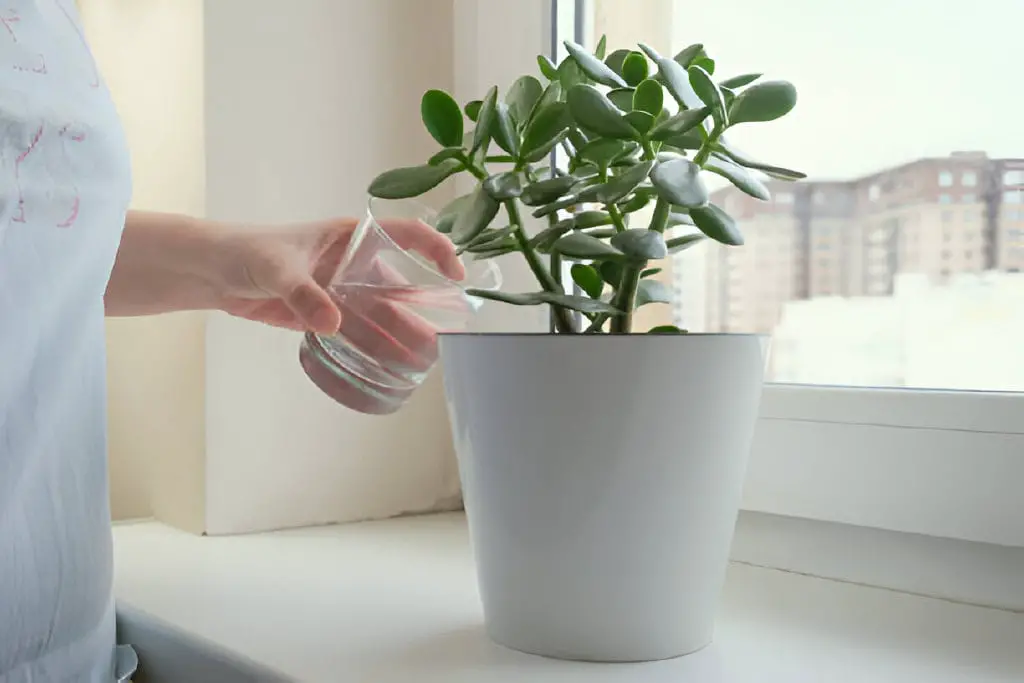
The most common reason your Crassula will be falling over is likely to be due to having an overwatered jade plant.
As mentioned above, these succulents are native to South Africa and enjoy a hot, warm, and dry environment. Because they store water in their stems for such long periods of time, it means that they are susceptible to over-watering.
An overwatered jade plant is a common issue amongst houseplant lovers, so don’t be alarmed if you have made this mistake!
Symptoms of an overwatered jade plant are mushy leaves, leaves turning yellow, leaves dropping off, and extremely wet, soggy soil.
The main concern is that if you have overwatered your jade and it is left sitting in wet, soggy soil, then this is the perfect condition for root rot to occur.
When root rot begins, this is where you will notice your jade plant falling over. This is because the root system has become damaged and it doesn’t have the strength to support as much of the plant matter as it used to.
If you think that overwatering could be causing your jade plant to fall over, then the first step is to test the soil. If it feels wet and soggy, then you may have overdone it.
Gently lift your crassula out of its pot and check the roots. Healthy roots are firm and white, whereas roots with root rot will be brown and slimy.
Unfortunately, root rot is hard to fix, and you will either need to cut away at the roots and repot or propagate depending on how severe the disease is.
I have a whole article on jade plant root rot that will guide you through what to do! Try not to panic, as there are definitely ways you can save a dying jade plant!
2. Jade Plant Falling Over Due to Underwatering
Vice versa, your jade plant falling over could be because of underwatering!
Although not as big an issue as overwatering, it is still not healthy for your jade plant to be starved of water.
If you have an underwatered jade plant, then you will notice that the leaves begin to shrivel, wilt, and droop, and the soil is very, very dry. The plant will also start to lack nutrients and energy, and this will be the reason your jade plant falls over.
Both overwatering and underwatering are unhealthy, and if you are doing either, then your jade plant certainly won’t thrive.
It is important that you use an appropriate watering schedule. I use the term ‘schedule’ lightly, as there are no set times and dates you should water. How often you water a jade plant will depend on a number of things, such as location, environment, and season.
Because of this, you should go by the rule of thumb that a jade plant should be watered once the soil is completely dry. In the summer months, this might be once a week, whereas, in the winter, this could be once a fortnight.
Use your finger to press a couple of inches into the soil. If it is dry all the way down, then you can give your jade plant a thorough soaking. Water until it pours out of the drainage holes, and make sure you discard any excess water. You should then not rewater until the soil is completely dry again.
3. Jade Plant Falling Over Due to Wrong Soil
It is important that you are using well-draining, light soil. If the soil is too dense or heavy, then it will retain too much water, causing overwatering and eventually causing your jade plant to fall over.
For well-draining soil, you should be using a blend of organic and inorganic material.
A lot of houseplant owners prefer to make their own potting soil mix for succulents, but I prefer to buy a ready-made mix simply because I feel like it saves me time. I have tried and tested a fair few soils, but now I tend to stick to two.
My first choice will always be The Next Gardener Organic Succulent and Cactus Soil Mix. This particular soil is a combination of 75% substrate, 25% perlite, and low fertilizer. These ingredients make for a very well-draining soil, and I don’t even have to add anything extra into the mix. I have repotted a number of jade plants using this, and I feel as if they always thrive afterward.
If the above is sold out, my second choice is Hoffman 10410 Organic Cactus and Succulent Soil Mix. This is made out of Canadian Sphagnum Peat moss, Reed Sedge Peat, Perlite, Sand, Limestone. The peat moss and perlite make for a well-draining soil, while the limestone acts as a pH balancer as jade plants prefer slightly more acidic soil.
Both brands are affordable and are both succulent soils that I would happily recommend.
As I said, these are just the soils I prefer to use, but if you don’t want to order online, then you can head down to your local garden center. There you will definitely be able to find a cactus and succulent potting soil mix and will be well on your way to stopping your jade plant falling over.
4. Jade Plant Falling Over Due to Wrong Light
A jade plant falling over could also be due to wrong lighting. Crassula Ovata loves bright, sunny spots.
A lack of sunlight will be sure to stunt your plant’s growth, and this will result in the stems becoming thinner and weaker, while the leaves become heavier. This means that your jade plant is too heavy and falling over!
If you have an indoor jade plant, try to place it in a bright, sunny spot, ideally perched on a south-facing window.
Jade plants are, however, prone to sunburn. Let them get natural sunlight in the morning for 4-6 hours. In the afternoon, place in the shade to cover from the scorching sun!
If your jade plant falling over is due to the wrong lighting conditions, you should prune your plant before you move it to a south-facing window. Cut away the weak stems and leave the stronger ones.
5. Low Temperature
As we have discussed, jade plants thrive in hot, desert conditions. Although relatively adaptable to different temperatures, if a jade plant is exposed to cold, freezing temperatures for too long it will start to fall over.
If you have an outdoor jade plant, then you will want to move it indoors in the winter. This particular type of succulent should not be exposed to temperatures lower than 40 degrees Fahrenheit. They are in the U.S. Department of Agriculture plant hardiness zones 10 and 11.
If you live in a very cold area, it is recommended you buy a grow light to provide heat for your jade plant. You will want a grow light with a fluorescent LED bulb, provides a natural ‘daylight’ color (between 5,000 and 6,500k) and can be placed around 12” above your plant.
I have this grow light from Amazon that I use on my succulents, and it works a treat. It has multiple settings along with a timer function. It provides the perfect lighting and heat and is relatively cheap for a grow light. If you only have a couple of succulent plants, then this is ideal.
| Check out: Jade Plant Leaves Turning Red. |
6. Over-Fertilizing
Fertilizing a jade plant is great and can promote excellent growth. However, there is such a thing as having too much good!
Over-fertilizing a succulent can actually cause more damage than good and will cause your jade plant to fall over.
Jade plants don’t need fertilizing as much as other plants. In fact, only fertilizing once per year just before the growing season will be enough. During the winter, jade plants are dormant, so they don’t need any extra nutrients.
If you overfertilize, you will end up burning the roots.
7. Constant Repotting
Jade plants do not need to be repotted very often. Once every 3-4 years is all they need. If you are repotting any more than this, then it could lead to your jade plant falling over as you will damage the roots.
Repotting can cause stress to plants, so it is important that you only repot when you need to. If you think your jade plant needs to be repotted, then the best way to check is to inspect the bottom of your pot. If the roots are coming out of the drainage holes, then it is most likely the right time.
You should repot just before the growing season. Do not repot when the plant is dormant.
8. Jade Plant Top Heavy Falling Over
The final reason your jade plant is falling over could quite simply be that it is top heavy, What this means is that there are too many stems and leaves that the root system cannot support.
To fix this, you’ll need to get your gardening gloves and do a little pruning!
Trim away the older leaves, as these tend to fall off anyway. Then, if you have any that look a bit wilted, you can chop away at those too.
If your jade plant is top heavy and falling over, use it as an opportunity to propagate! You can propagate a jade plant through cuttings, so it is the ideal time to get experimenting. You will end up with a sturdy, strong jade plant that doesn’t fall over, plus some new babies to take care of! It’s a win, win.
| Read: Jade Plant Bugs |
Jade Plant Falling Over Conclusion
I hope you have enjoyed this article on how to stop a jade plant from falling over! I have discussed the eight main reasons why your cassula plant will fall over, and these are:
- Overwatering
- Underwatering
- Wrong soil
- Wrong lighting
- Low temperature
- Over fertilizing
- Constant repotting
- Jade plant top heavy
These are the most common reasons you’ll have a falling over jade plant.


